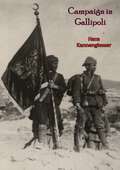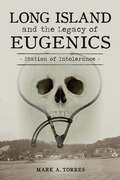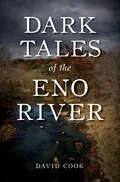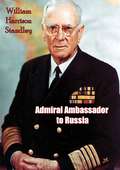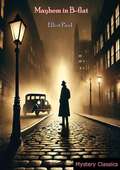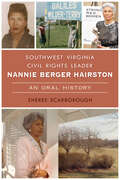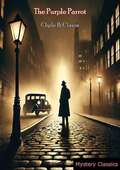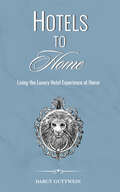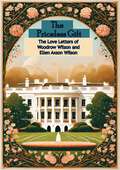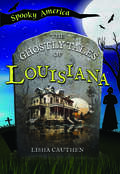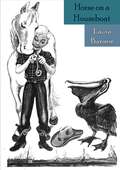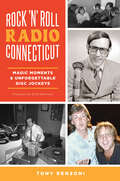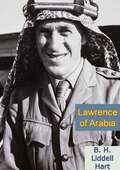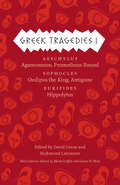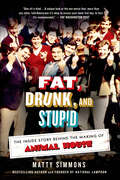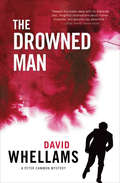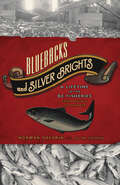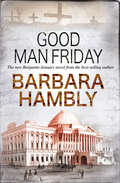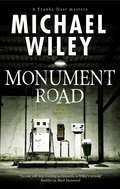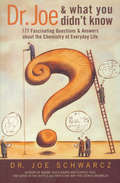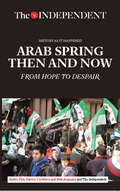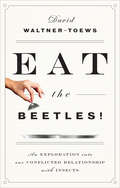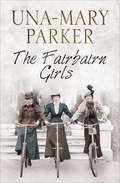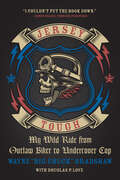- Table View
- List View
Campaign in Gallipoli
by Hans KannengiesserHans Kannengiesser’s Campaign in Gallipoli is a riveting firsthand account of one of World War I’s most infamous and hard-fought campaigns, offering a unique perspective from the German officer who played a key role in defending the Ottoman Empire’s positions against Allied forces. This book provides an in-depth analysis of the military strategies, the grueling conditions, and the immense human cost of the Gallipoli Campaign, as seen through the eyes of a commander on the ground.Kannengiesser, who served as a German military advisor and commander of Ottoman forces, recounts the intense battles that unfolded on the rugged cliffs and beaches of Gallipoli. He provides detailed descriptions of the defensive operations, the coordination between German and Ottoman forces, and the challenges they faced against a determined Allied assault. His narrative sheds light on the strategic significance of the Dardanelles, the difficulties of trench warfare, and the resourcefulness required to hold the line in the face of overwhelming odds.Beyond the battlefield, Kannengiesser reflects on the broader implications of the campaign, including the cultural dynamics of working alongside Ottoman troops and the ultimate failure of the Allied effort to secure the region. His account combines military analysis with personal observations, making it a valuable resource for understanding the complexities of this pivotal moment in history.Campaign in Gallipoli is an essential read for military historians, World War I enthusiasts, and anyone interested in gaining a deeper understanding of one of the conflict’s most iconic and tragic campaigns. Kannengiesser’s detailed and candid account offers a rare glimpse into the perspective of those tasked with defending Gallipoli, making this book a timeless addition to the literature of the Great War.
Long Island and the Legacy of Eugenics: Station of Intolerance
by Mark A. TorresA Dark History Revealed In the early twentieth century, eugenics was at the forefront of scientific discourse in the quest to understand human genetics. On Long Island and throughout the nation, eugenicists were granted unfettered access to conduct experiments on prisoners, psychiatric patients, Coney Island circus performers and more, all in an effort to legitimize a false science. The origins of the eugenics movement can be found within the Eugenics Record Office, an otherwise nondescript two-and-a-half-story administrative building at Cold Spring Harbor, New York, under the direction of Charles Benedict Davenport from 1910 to 1939. The work conducted there directly led to the forced sterilization of thousands of American citizens and the passage of anti-immigration laws and sparked a deadly global movement. Author Mark Torres explores the local characters, influences, landmarks and ghastly consequences that emanated from this small Long Island facility for decades and spread throughout the world.
Dark Tales of the Eno River (Murder & Mayhem)
by David CookMayhem on the Eno River Visitors to the Eno River don’t expect to encounter haunted houses, train wrecks or fun outings that turn into tragedy, but some of them have experienced just that. In 1771, a few of America’s first rebels were hanged near the river. An accident at a sawmill led to a series of hauntings. A Valentine’s Day dance became the area’s greatest murder mystery. Train-hopping teenagers had harrowing experiences, and a baby abandoned in a suitcase was found by a nearby farmer. Author and former Eno River State Park ranger Dave Cook details the scary side of a beloved tributary.
Admiral Ambassador to Russia
by William Harrison StandleyWilliam Harrison Standley’s Admiral Ambassador to Russia is a riveting firsthand account of the author’s dual roles as a distinguished naval officer and U.S. ambassador to the Soviet Union during a pivotal period in history. This memoir offers unique insights into the complexities of diplomacy and military strategy during World War II, as seen through the eyes of a man who navigated both arenas with skill and determination.Admiral Standley recounts his time as a senior naval officer, including his role as Chief of Naval Operations, before transitioning to his diplomatic post in the USSR in 1942. As ambassador, he worked to strengthen the fragile alliance between the United States and the Soviet Union, addressing the challenges of cultural and ideological differences while managing critical wartime negotiations.The book provides a rare glimpse into Standley’s interactions with key figures such as Joseph Stalin and Franklin D. Roosevelt, offering candid observations on the political dynamics and tensions of the time. Standley’s narrative combines vivid descriptions of wartime Moscow, keen insights into Soviet-American relations, and reflections on the difficulties of building trust between allies with starkly different worldviews.Admiral Ambassador to Russia is not only a compelling personal story but also an invaluable historical document that sheds light on the challenges of diplomacy during one of the most consequential conflicts in modern history. Standley’s blend of military expertise and diplomatic candor makes this memoir a must-read for history enthusiasts, military scholars, and anyone interested in the intricate dance of international relations during World War II.
Mayhem in B-flat
by Elliot PaulElliot Paul’s Mayhem in B-Flat is a delightful blend of mystery, music, and humor, featuring the unconventional and ever-resourceful Inspector Homer Evans. Set in the enchanting streets of Paris, this lighthearted whodunit pairs sharp wit with a finely tuned mystery that keeps readers guessing—and laughing—until the final note.The story begins when a talented but eccentric violinist is murdered under baffling circumstances, leaving behind a tangle of cryptic clues and a trail of suspects that includes musicians, artists, and Parisian socialites. Called in to untangle the case, Inspector Evans finds himself immersed in the bohemian world of the Parisian music scene, where secrets, rivalries, and jealousies abound.With his characteristic charm and unorthodox methods, Evans navigates a symphony of intrigue, aided by his quirky friends and his ability to find humor in the most unexpected places. As the investigation unfolds, the case becomes increasingly complex, weaving together themes of art, ambition, and human folly, all set against the vibrant backdrop of 1930s Paris.Paul’s sharp prose and knack for crafting eccentric characters make Mayhem in B-Flat a standout in the realm of comedic mysteries. Filled with clever dialogue, atmospheric settings, and a captivating mystery, this novel strikes a perfect balance between suspense and humor.Ideal for fans of classic mysteries with a comedic twist, Mayhem in B-Flat is a charming and entertaining read that captures the spirit of Paris and the irresistible allure of solving crimes in the most unconventional ways.
Southwest Virginia Civil Rights Leader Nannie Berger Hairston: An Oral History (American Heritage)
by Sheree ScarboroughNannie Berger Hairston was a crusader for justice in twentieth-century Virginia. Nannie Berger Hairston was born in West Virginia in 1921, half a century after the end of the Civil War. She attended segregated schools, graduated, married and started a family. When Nannie’s husband, John, lost his job in the coal mine, the Hairstons moved to Southwest Virginia. It was the height of Jim Crow, and yet, against great odds, she and John became leaders in the community, advocating for civil rights and social justice. Nannie Hairston’s advice was sought by the powerless as well as the powerful. At the time of her death in 2017, she had taken her place as an icon for truth, justice and love. Local author Sheree Scarborough uses Nannie Hairston’s own words to tell her story.
The Purple Parrot
by Clyde B. ClasonIn The Purple Parrot, Clyde B. Clason delivers a clever and atmospheric mystery that combines the elegance of Golden Age detective fiction with his signature blend of intricate puzzles and engaging storytelling. Featuring Theocritus Lucius Westborough, a professor turned amateur sleuth, this novel plunges readers into a web of secrets, deception, and murder.The story begins with a peculiar artifact—a gilded purple parrot—at the center of an enigmatic inheritance dispute. When a wealthy collector is found dead in his study under suspicious circumstances, the eccentric artifact becomes both a tantalizing clue and the key to uncovering the truth. The case grows more complex as additional deaths occur, all seemingly connected to the strange bird and the shadowy figures vying to possess it.Called upon to solve the mystery, Westborough must unravel the tangled relationships, dark motives, and cryptic messages surrounding the crime. With his sharp intellect and methodical approach, he pieces together a trail of clues that lead to a shocking and unexpected conclusion.Set against the glamorous yet sinister backdrop of 1930s Chicago, The Purple Parrot is rich with atmosphere, sharp dialogue, and Clason’s trademark attention to detail. The novel masterfully balances suspense with intellectual intrigue, making it a standout in the realm of classic detective fiction.Perfect for fans of intricate whodunits and locked-room mysteries, The Purple Parrot offers a satisfying challenge to armchair detectives and a captivating escape into a world of danger, cunning, and deduction.
Hotels to Home: Living the Luxury Hotel Experience at Home
by Darcy GuttweinWhat if you could live the luxury hotel experience at home, every day? Hotels to Home answers that question by creating a new lifestyle template that bridges the gap between your fondest hotel memories and everyday living. Imagine stepping into your entryway with the eager anticipation as when entering your favorite hotel lobby, defining your family’s hotel brand as a lifestyle strategy, finely orchestrating room service for your household, or celebrating the end of each day with personalized turndown service. Taking what might have once been considered ordinary homelife and making your address a highly coveted destination. Less memoir, more guidebook. Peek into the author’s travel essays and enjoy prompts to excavate your own vacation preferences that reveal a holiday lifestyle at home. Welcome to the Hotels to Home lifestyle!
The Priceless Gift: The Love Letters of Woodrow Wilson and Ellen Axson Wilson
by Eleanor Wilson McAdooThe Priceless Gift: The Love Letters of Woodrow Wilson and Ellen Axson Wilson by Eleanor Wilson McAdoo offers an intimate glimpse into the private lives of President Woodrow Wilson and his first wife, Ellen Axson Wilson, through their heartfelt correspondence. Compiled and edited by their daughter, Eleanor, this collection of love letters provides a unique perspective on the deep bond and enduring romance that defined their relationship.Spanning their courtship and early years of marriage, the letters reveal the tender, intellectual, and emotional connection between Woodrow and Ellen. They share not only their hopes and dreams but also the challenges they faced as a couple navigating personal and professional aspirations. Through their words, readers gain insight into the formative experiences that shaped Woodrow Wilson's character and the supportive partnership Ellen provided during his rise to national prominence.Rich with historical and personal significance, The Priceless Gift also sheds light on Ellen Axson Wilson’s intellect, artistic talent, and influence, offering a fuller picture of a First Lady often overshadowed by her husband’s legacy. This deeply moving collection is more than a chronicle of a presidential romance—it is a celebration of love, resilience, and partnership during an era of great change.Perfect for history enthusiasts and romantics alike, this book provides a rare and personal view into one of America’s most notable couples.
The Ghostly Tales of Louisiana (Spooky America)
by Lisha CauthenSpooky stories and behind-the-scene incidents from the award-winning PBS documentary "The Haunting of LouisianaWelcome to spooky Louisiana! Stay alert! Ghosts lurk around every corner. Even the most unexpected places might be haunted by wandering phantoms. Did you know that ghost pirates haunt Louisiana's bayous in search of buried treasure? Or that at the Old State Capitol in Baton Rouge, you might find a trail of ghostly footprints? Can you believe that in New Orleans, ghosts and spirits come alive in the famously haunted Cities of the Dead?Pulled right from history, these ghostly tales will change the way you see Louisiana forever, and have you sleeping with the lights on! Adapted from Haunted Louisiana by Barbara Sillery
Horse on a Houseboat
by Laura BannonIn Horse on a Houseboat, Laura Bannon crafts a charming and whimsical tale of adventure, friendship, and a very unusual living arrangement. Perfect for young readers, this delightful story combines humor, imagination, and the joy of unexpected discoveries.The story begins when young Sally and her family move aboard a houseboat for the summer, trading their usual routine for the tranquility of life on the water. But life takes an exciting turn when Sally discovers a horse living on another nearby houseboat. Intrigued by the peculiar situation, Sally befriends the horse’s owner and becomes deeply involved in caring for the animal.As Sally and her new friends navigate the challenges and surprises of houseboat living, they uncover a mystery tied to the horse and its unusual circumstances. Along the way, they learn valuable lessons about responsibility, teamwork, and the bonds that form between people and animals.Laura Bannon’s vivid descriptions and engaging narrative bring the unique setting of the houseboat community to life. With its endearing characters and gentle humor, Horse on a Houseboat is a heartwarming story that celebrates curiosity, kindness, and the magic of childhood adventures.Whether read aloud or enjoyed independently, this enchanting book will capture the imaginations of children and inspire a love for both animals and the open water.
Rock 'n' Roll Radio Connecticut: Magic Moments & Unforgettable Disc Jockeys
by Tony RenzoniConnecticut radio stations and their charismatic disc jockeys played an integral role in the history of rock ‘n’ roll. They served as a vital connection between the music and their audience, providing listeners the one vehicle they most needed—a format for them to listen to their favorite songs. Learn about such memorable moments as the fierce rivalry between WDRC and WPOP, the zany antics of Joey Reynolds, and the on-air “death” of Lee “Baby” Simms. WPLR emerged as a “town hall meeting held in a frat house,” and colorful skits filled the airwaves. With in-depth interviews and timeless photos, author Tony Renzoni captures the spirit of the vibrant music scene and traces the important and influential role of past and present on-air personalities.
Lawrence of Arabia
by B. H. Liddell HartB. H. Liddell Hart’s Lawrence of Arabia is an authoritative and compelling biography of T.E. Lawrence, the enigmatic and legendary figure who played a pivotal role in the Arab Revolt during World War I. Written by one of the 20th century’s most respected military historians, this book provides a deeply nuanced portrait of Lawrence as both a military strategist and a complex individual shaped by extraordinary circumstances.Drawing on extensive research, personal correspondence, and firsthand accounts, Liddell Hart explores Lawrence’s transformation from an Oxford scholar of Middle Eastern archaeology into a revolutionary leader and guerrilla warfare expert. The book delves into Lawrence’s alliances with Arab leaders, his daring campaigns against the Ottoman Empire, and his role in uniting diverse tribes under a common cause.Liddell Hart also examines Lawrence’s groundbreaking strategies in asymmetrical warfare, offering insights into his military genius and the enduring influence of his tactics. At the same time, the biography captures Lawrence’s internal struggles with fame, his sense of betrayal during the postwar peace negotiations, and his enduring quest for purpose.With its rich detail and balanced perspective, Lawrence of Arabia sheds light on the man behind the legend, presenting a vivid account of his life and legacy in both military and political history. Liddell Hart’s masterful writing ensures this biography is as engaging as it is informative, offering readers a profound understanding of one of the most fascinating figures of the modern era.Perfect for history enthusiasts, military scholars, and fans of epic biographies, Lawrence of Arabia is a timeless exploration of leadership, courage, and the complexities of shaping history.
Greek Tragedies I: Aeschylus: Agamemnon, Prometheus Bound; Sophocles: Oedipus the King, Antigone; Euripides: Hippolytus (The Complete Greek Tragedies)
by David Grene and Richmond LattimoreOutstanding translations of five plays, now updated with informative new content for students, teachers, and lovers of the classics.Greek Tragedies, Volume I contains:Aeschylus’s “Agamemnon,” translated by Richmond LattimoreAeschylus’s “Prometheus Bound,” translated by David GreneSophocles’s “Oedipus the King,” translated by David GreneSophocles’s “Antigone,” translated by Elizabeth WyckoffEuripides’s “Hippolytus,” translated by David Grene.Sixty years ago, the University of Chicago Press undertook a momentous project: a new translation of the Greek tragedies that would be the ultimate resource for teachers, students, and readers. They succeeded. Under the expert management of eminent classicists David Grene and Richmond Lattimore, those translations combined accuracy, poetic immediacy, and clarity of presentation to render the surviving masterpieces of Aeschylus, Sophocles, and Euripides in an English so lively and compelling that they remain the standard translations.In this highly anticipated third edition, Mark Griffith and Glenn W. Most have carefully updated the translations to bring them even closer to the ancient Greek while retaining the vibrancy they the for which our English versions are famous. New introductions for each play offer essential information about its first production, plot, and reception in antiquity and beyond. Each volume includes an introduction to the life and work of its tragedian, as well as notes addressing textual uncertainties and a glossary of names and places mentioned in the plays. In addition to the new content, the volumes have been reorganized both within and between volumes to reflect the most up-to-date scholarship on the order in which the plays were originally written. The result is a collection destined to introduce new generations of readers to these foundational works of Western drama, art, and life.
Fat, Drunk, and Stupid: The Inside Story Behind the Making of Animal House
by Matty SimmonsIn 1976 the creators of National Lampoon, America's most popular humor magazine, decided to make a movie. It would be set on a college campus in the 1960s, loosely based on the experiences of Lampoon writers Chris Miller and Harold Ramis and Lampoon editor Doug Kenney. They named it Animal House, in honor of Miller's fraternity at Dartmouth, where the members had been nicknamed after animals. Miller, Ramis, and Kenney wrote a film treatment that was rejected and ridiculed by Hollywood studios—until at last Universal Pictures agreed to produce the film, with a budget of $3 million.A cast was assembled, made up almost completely of unknowns. Stephen Furst, who played Flounder, had been delivering pizzas. Kevin Bacon was a waiter in Manhattan when he was hired to play Chip. Chevy Chase was considered for the role of Otter, but it wound up going to the lesser-known Tim Matheson. John Belushi, for his unforgettable role as Bluto, made $40,000 (the movie's highest-paid actor). For four weeks in the fall of 1977, the actors and crew invaded the college town of Eugene, Oregon, forming their own sort of fraternity in the process. The hilarious, unforgettable movie they made wound up earning more than $600 million and became one of America's most beloved comedy classics. It launched countless careers and paved the way for today's comedies from directors such as Judd Apatow and Todd Phillips.Bestselling author Matty Simmons was the founder of National Lampoon and the producer of Animal House. In Fat, Drunk, and Stupid, he draws from exclusive interviews with actors including Karen Allen, Kevin Bacon, Peter Riegert, and Mark Metcalf, director John Landis, fellow producer Ivan Reitman, and other key players—as well as behind-the-scenes photos—to tell the movie's outrageous story, from its birth in the New York offices of the National Lampoon to writing a script, assembling the perfect cast, the wild weeks of filming, and, ultimately, to the film's release and megasuccess. This is a hilarious romp through one of the biggest grossing, most memorable, most frequently quoted, and most celebrated comedies of all time.
The Drowned Man: A Peter Cammon Mystery (A Peter Cammon Mystery #2)
by David WhellamsA retired Scotland Yard detective is lured back to work in &“a series to follow particularly for Louise Penny fans and the Masterpiece Mystery set&” (Library Journal). Chief Insp. Peter Cammon is supposed to be retired, but he&’s reluctantly agreed to travel to Canada to retrieve the body of a murdered colleague. And once he&’s involved, he can&’t resist delving into the oddities of the crime. His fellow cop was brutally attacked, run over by a car, and then dumped into a canal—all seemingly linked to the theft of three letters from the American Civil War era, one of which may have been signed by John Wilkes Booth . . . &“Tightly plotted and featuring a lead character who keeps us glued to the page, the book should definitely suit readers looking for an intriguing lead character and a solid mystery.&” —Booklist
Bluebacks and Silver Brights: A Lifetime in the B.C. Fisheries from Bounty to Plunder
by Allan Safarik Norman SafarikA captivating memoir set during the pinnacle of West Coast fishingMore than a history of the Vancouver fishing industry, Bluebacks and Silver Brights is a collection of great adventures set on the Pacific coast. With dozens of salty tales of hardworking and hard-living fisherman and fish industry workers, this is Norman Safarik’s story of West Coast fishing from the Gulf of Georgia to Prince Rupert, with a detour to New York’s old-time fish markets. With wisdom and insight, Safarik’s story is also an ecological warning, recalling the lost bounty of Canada’s natural resources of a century ago, and their possible extinction today at the hands of government mismanagement and overfishing.
The Filthy Few: A Steve Nastos Mystery (The Steve Nastos Mysteries #3)
by R.D. CainWhether it&’s cops or criminals, every organization has its filthy few . . . No longer on the force, Karen Grant is now working as a journalist—and one of her two sources has just been murdered in what police have written off as a drug deal gone bad. When Grant and a witness become hunted themselves, she can think of only one person to turn to: her ex-partner, disgraced Toronto detective Steve Nastos. With help from his friend, lawyer Kevin Carscadden, Nastos is about to confront two ambitious rookie cops and some nasty outlaw bikers who have one thing in common: they&’ll do anything to serve their own interests . . .
Good Man Friday (The Benjamin January Novels #12)
by Barbara HamblyFree man of color Benjamin January travels to Washington, DC, to track down a missing mathematician in this &“excellent&” pre–Civil War mystery (Publishers Weekly, starred review). New Orleans, 1838. Living in antebellum New Orleans as a free man of color, Benjamin January has always taken whatever work he could find. But when he suddenly loses his job playing piano at extravagant parties, he finds himself taking on an entirely new—and exceedingly dangerous—enterprise. Sugar planter Henri Viellard has hired Benjamin to travel with him to Washington, DC. Henri&’s friend, an elderly English mathematician named Selwyn Singletary, was last seen in Washington before he went missing. With Benjamin&’s help, Henri intends to track him down. Plunged into a murky world of spies, slave snatchers, and dirty politicians, Benjamin uncovers a coded secret that he attempts to decipher with the help of a young Edgar Allan Poe. But a powerful ring of conspirators doesn&’t want the secret known. And they&’re ready to kill anyone who gets in their way.
Monument Road: A Florida Noir Mystery (The Franky Dast Mysteries #1)
by Michael Wiley&“This gorgeously crafted, shudderingly dark novel blends the genres of psychological thriller and murder mystery&”—from the Shamus Award-winning author (Naples Florida Weekly).Introducing former death-row inmate turned private investigator Franky Dast in the first of an intriguing crime noir series. Having spent eight years on death row for a crime he didn&’t commit, Franky Dast now works as an investigator for the Justice Now Initiative, seeking to help others in the same situation. But when he learns that Bill Higby, the detective whose testimony helped convict him, is facing his own murder charge, Franky is torn. Should he help the man he hates more than any other, the man who remains convinced of Franky&’s guilt to this day? As Franky delves further, he comes to realize that in order to prove Higby&’s innocence, he must also prove his own. Unless he finds out what happened that fateful night eight years before, the night 15-year-old Duane Bronson and his 13-year-old brother were murdered, Franky will always be under suspicion, and the real killer will remain free. What really happened that dark, wet night on Monument Road? And is Franky prepared for the shocking truth? &“Like your noir pitch-black? So does Wiley.&”—Kirkus Reviews &“Engrossing . . . Readers will want to see more of the complex Dast, who&’s both fragile and strong, cynical and naïve.&”—Publishers Weekly &“Masterfully setting in motion his main character&’s goals and the array of blocking forces, the author carefully orchestrates the larger and smaller revelations, the successes and failures along Franky&’s path, into a thundering coda of suspense.&”—Naples Florida Weekly
Dr. Joe & What You Didn't Know: 177 Fascinating Questions & Answers about the Chemistry of Everyday Life
by Dr. Joe SchwarczThe mythbuster and bestselling popular science author of A Grain of Salt tackles questions that show the scientific underpinnings of our culture. Dr. Joe & What You Didn&’t Know acts as both the source and satiation of scientific curiosity through a series of 177 chemistry-related questions and answers designed to both inform and entertain. From the esoteric to the everyday, the topics Dr. Joe Schwarcz tackles range from Beethoven&’s connection to plumbing to why rotten eggs smell like rotten eggs. How did a sheep, a duck, and a rooster usher in the age of air travel? What does Miss Piggy have to do with the World Cup? And is there really any danger in eating green potatoes? The answers to these whimsical questions and more are revealed in this collection in an accessible scientific fashion. &“Only Dr. Joe can turn the world&’s most fascinating questions into a compelling journey through the great scientific mysteries of everyday life.&” —Paul Lewis, former president and general manager, Discovery Channel &“A book with an incredibly high &‘Did you know that. . . ?&’ quotient . . . Completely captivating.&” —New Brunswick Reader
Arab Spring Then and Now: From Hope to Despair (History as it Happened)
by Robert Fisk Patrick Cockburn Kim Sengupta The IndependentThree award-winning journalists dive into the 2010 uprising that engulfed North Africa and the Middle East—and its aftermath.&“The big problem with the Middle East is to get people to see it from a different perspective; to stop accepting the American version of reality, i.e. &‘terror terror terror,&’ and instead look at the question of injustice. Seeing a different perspective, that of people who suffer for example.&”—Robert Fisk, The Independent In December 2010, the &“Tunisian Revolution&” touched off a wave of protests, riots, revolutions and civil wars throughout the Middle East. Initially the world hoped for positive change—democracy, free elections, and human rights. But, by 2012 the Arab Spring had morphed into &“Arab Winter&” bringing death, destruction, and despair. The Independent&’s Robert Fisk, Patrick Cockburn, and Kim Sengupta, among the most acclaimed Middle East correspondents of our generation, examine the events of this regional tsunami that threatens to have an impact on our world for years to come.
Eat the Beetles!: An Exploration into Our Conflicted Relationship with Insects
by David Waltner-Toews&“Provides a sturdy literary exoskeleton to the field of human insectivory . . . it entertains as it enlightens&” (Daniella Martin, author of Edible). Meet the beetles: there are millions and millions of them and many fewer of the rest of us—mammals, birds, and reptiles. Since before recorded history, humans have eaten insects. While many get squeamish at the idea, entomophagy—people eating insects—is a possible way to ensure a sustainable and secure food supply for the eight billion of us on the planet. Once seen as the great enemy of human civilization, destroying our crops and spreading plagues, we now see insects as marvelous pollinators of our food crops and a potential source of commercial food supply. From upscale restaurants where black ants garnish raw salmon to grubs as pub snacks in Paris and Tokyo, from backyard cricket farming to high-tech businesses, Eat the Beetles! weaves these cultural, ecological, and evolutionary narratives to provide an accessible and humorous exploration of entomophagy. &“Waltner-Toews punctuates this serious subject with his quirky humour . . . Eat the Beetles! is an essential part of a growing buzz.&” —Toronto Star &“An excellent read for those interested in multiple perspectives on the issue of entomophagy, digging deep into science and math with flair and irreverence.&” —Scene Magazine &“When it comes to the future of insects as food for humans and livestock, Waltner-Toews walks the line between skepticism and optimism in an intelligent, witty, and provocative analysis.&” —Jeff Lockwood, author of The Infested Mind &“Full of humor and science, this edible insect book is definitely a must read!&” —EntoMove Project
The Fairbairn Girls
by Una-Mary ParkerA nineteenth-century family of Scottish aristocrats falls victim to a mysterious curse in this historical saga by the author of Riches—&“A spellbinding read&” (Booklist). Scotland, 1891. The aristocratic Fairbairn family have occupied Lochlee Castle in Argyllshire for the past five centuries. The current head of the family, the Earl of Rothbury, along with his wife, two sons, and nine daughters, all seem destined for a happy future. But on the day that his daughter Laura&’s engagement is announced, Lord Rothbury receives an unsettling visit from a mysterious man who harbors a grudge—and a curse—for the Rothbury family. Soon it seems the whole family is doomed, with tragedy and heartbreak around every corner. As the years go on, the surviving Fairbairns attempt to show bravery in adversity. But will they ever escape the curse? &“With an unusual plot full of unexpected twists and a graceful writing style, Parker&’s latest is not only a spellbinding read but also an eye-opening look at the role of the aristocracy and women in Scotland at the turn of the nineteenth-to-twentieth century.&” —Booklist
Jersey Tough: My Wild Ride from Outlaw Biker to Undercover Cop
by Wayne "Big Bradshaw Douglas P. LoveThis entertaining true crime memoir chronicles one man&’s redemptive journey from motorcycle gang enforcer to undercover police officer. The only patch-wearing outlaw biker to become a sworn police officer—and live to tell his tale In 1977, Wayne &“Big Chuck&” Bradshaw was Jersey tough. He was a member of the outlaw Pagans bike gang, a One Percenter, and had earned his colours in a world of boozing, bloody bar fights, and high-stakes crime. But after getting too close to extreme violence, Bradshaw made the life-threatening decision to change his path. The toughness Bradshaw used to survive biker life led him to a distinguished and heroic career as an undercover narcotics officer for the same New Jersey police department that had once arrested him. Bradshaw tells his story with the truth of the streets, from his time in the U.S. Army to his decision to join the Pagans, to the wild adventures of working narcotic stings. He rode with truly dangerous criminals and then returned to those same places as a cop. He tracks down fugitives in Jersey&’s toughest neighbourhoods, risks his life rescuing dozens from a fire in a seniors&’ residence, and volunteers in the aftermath of 9/11. Jersey Tough is an unflinching memoir of personal struggle, of battling with darkness, and ultimately of redemption. Praise for Jersey Tough&“Bradshaw delivers both unflinching honesty and gritty, raw action in this fast-moving thriller.&” —Joe Pistone, a.k.a. Donnie Brasco &“Fast-paced, brutally honest, and compelling.&” —Lisa Pulitzer, New York Times–bestselling author&“As a former sergeant-at-arms in one of the other &“Big Four&” motorcycle clubs, I can confirm the authenticity of the biker tales graphically revealed on these pages. Epxosing his courage as well as his frailties, Big Chuck bares all with surprising candor.&” —Glenn Heggstad, author of Two Wheels Through Terror&“[An] immensely entertaining memoir. . . . This fascinating book is true-crime writing at its best and will appeal to anyone interested in the sordid dealings of America's criminal underworlds.&”—Publishers Weekly
